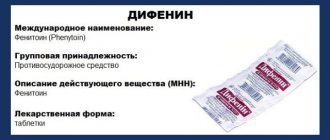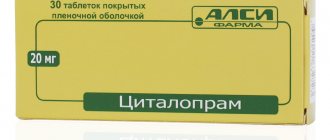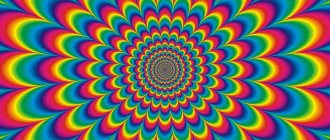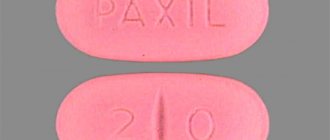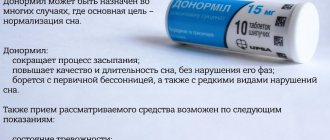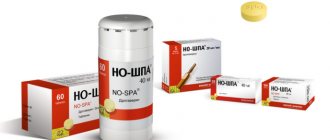Pharmacists around the world are fighting to come up with a drug that will suppress pain during withdrawal in addicts who have stopped taking drugs. After all, it is precisely this that is the main reason that a person gets on the needle again. Usually it is very painful, and the patient may experience convulsions. Girdle pain is very difficult to tolerate without medication. As a result, the person breaks down and starts using the drug again.
Reviews about the drug “Lyrica” are interesting. The tablets are prescribed by doctors, mainly for drug addiction - both heroin and medication. Drug addiction specialists notice positive dynamics in pain relief.
History of creation
The drug was developed in the late 90s of the last century by the pharmaceutical corporation Pfizer. Lyrica was marketed as a treatment for epilepsy without significant side effects. However, a few years later it became clear that not everything is so simple. At first, users discovered pleasant side effects of Lyrica, which prompted many of them to increase their dosage. Then, one after another, patients suffering from an established drug addiction to the drug suddenly began to arrive at rehabilitation centers.
In the early tenths of this century, the popularity of Lyrica reached its apotheosis - drug addicts began to simply sweep the drug off pharmacy shelves. It was at this time that control over the sale of Tramadol, an opium-containing painkiller that was also used by many for non-medical purposes, increased, so lovers of artificial pleasures needed an alternative. Lyrica, which was over-the-counter at that time, became just such an alternative. As a result of unhealthy interest on the part of a marginal segment of Russian society, the country's government decided to include Lyrica in the drug register, which meant that from now on the drug could only be purchased by prescription.
Side effects
When using the drug in question as a painkiller, you must wait approximately 1 hour for the effect. Throbbing pain, muscle pain, and headaches disappear without a trace, alleviating the suffering of patients. Reviews from doctors, however, also indicate numerous negative consequences of taking the drug, such as:
- decreased sexual function and anorgasmia;
- difficulty of communication;
- hallucinations turning into a panic state;
- feeling of fog in the eyes;
- decreased vision;
- increased fatigue;
- decrease and complete absence of erection in men.

Effect on the body
Like any psychoactive drug, pregabalin affects both the central nervous system and muscle tissue and internal organs. Let's look at these effects in more detail.
Physiological symptoms
When using a standard dosage (50-150 mg), the following somatic manifestations are noted:
- mild muscle weakness
- feeling of heaviness throughout the body
- constriction of the pupil
- increased libido
- delayed ejaculation in men
It is thanks to these qualities that Lyrica began to be used as a mild aphrodisiac. However, it is important to understand that regular use of this drug can weaken natural sexual function.
Psycho-emotional manifestations
The psychoactive effect of the drug is weakly expressed and is manifested mainly by sedation, that is, a feeling of general calm, which, however, is often mixed with unpleasant side effects (we will talk about them a little later). The main psycho-emotional manifestations when using Lyrics:
- feeling relaxed
- reduction of anxiety
- slight euphoria
- drowsiness
These manifestations last from 5 to 10 hours, depending on the dosage and the individual characteristics of the consumer’s body.
Sensitivity to medication
Side effects of the drug are drowsiness and loss of coordination. Dry mouth and speech difficulties may occur. Clinical trials have shown no significant changes with overdose. Slight dizziness accompanies the entire duration of the drug.
If you are particularly sensitive to the constituent components, vomiting may begin, fainting may occur, and in extreme cases, coma. However, the question arises: is the therapeutic property of the drug Lyrica so effective, and why do doctors prescribe it to all dependent patients indiscriminately, since there are heroin and drug addicts? The new medicine “Lyrica” is getting mixed reviews from doctors. On the one hand, it is clearly suitable for certain diseases. But equally important is that it is used for intoxicating purposes.
Harm from drugs
Abuse of any psychoactive substance is dangerous, and pregabalin is no exception. Long-term use of the drug causes heart problems, kidney disease, liver pathologies, and impaired testosterone production. Lyrica may cause a severe allergic reaction, which may include hives or blisters on the skin, swelling in the throat and difficulty breathing. Suicidal ideation is also common with pregabalin use, and the risk is higher the higher the dose taken.
The main danger of regular use of Lyrica is the development of drug addiction.
Common side effects:
- blurred vision
- depression
- impaired concentration
- insomnia
- erectile disfunction
- fatigue
- nausea and vomiting
Many of these side effects may occur even with the first use. That is, the weak euphoria that Lyrica gives is usually overshadowed by a number of unpleasant accompanying effects.
Contraindications
Official contraindications for taking Lyrica are:
- planning and pregnancy itself;
- lactation period;
- driving a car under the influence of medication.

It is also prohibited to combine this medication with alcohol or other psychotropic substances. It is not recommended to prescribe it for kidney disease.
Considering the reviews of doctors about this drug, it can be noted that not everyone is unanimous in their opinion. Most advertise Lyrica as an effective remedy, but among experts there are those who oppose the use of this drug.
The instructions for the drug “Lyrica” (tablets, reviews of which are most often positive from doctors) make patients think more than once before resorting to its use.
Drug overdose
In most cases, an overdose of Lyrica occurs after a single dose of 300 mg or more. For persons with developed tolerance to the drug, the indicators will be 2-3 times higher. Clinical manifestations of pregabalin overdose:
- severe nausea and vomiting
- lethargy
- drowsiness
- weakening of concentration
- respiratory depression
Main reasons
Most often, an overdose occurs due to the desire of drug addicts to enhance the euphoric sensations from taking Lyrica. Having used the drug in a therapeutic dose and felt a pleasant effect, they strive to strengthen it, which prompts them to “catch up” with a new dose. Another common cause is combining Lyrica with other opioid medications. The fact is that pregabalin enhances the effects of morphine, heroin and other opioids. Some drug addicts use Lyrica for this very purpose, but calculating the dosage in such cases is very difficult, so such combinations often end tragically.
First aid
First of all, it is necessary to call an ambulance, and upon personnel arrival, talk about the reasons for the victim’s condition. In such cases, you cannot solve the problem yourself - the lack of professional help can cost the victim his life. While waiting for the arrival of doctors, the patient should be provided with maximum access to fresh air, placed on his side to avoid aspiration of vomit, and monitor the stability of the pulse and breathing. If necessary, perform indirect cardiac massage and artificial respiration.
Health care
Since Lyrica is consumed mainly orally, medical tactics will be based on gastric lavage and the use of sorbents. Additionally, symptomatic therapy is used. If breathing is difficult, artificial ventilation is used.
The key point of medical care in case of an overdose of pregabalin is measures to detoxify the body, that is, accelerate the elimination of toxic metabolites.
For this purpose, a saline drip can be used in combination with loop diuretics and potassium supplements. Hardware detoxification methods are also used, such as hemodialysis, hemosorption or plasmapheresis.
Consequences of lack of help
It is difficult to give an unambiguous forecast regarding the outcome of an overdose in the absence of timely medical care. Much depends on metabolic processes, the general health of the victim and the extent to which the recommended therapeutic dose is exceeded.
If the excess was insignificant, then the victim will simply have to wait for several extremely unpleasant hours, after which relief will come. However, if the recommended dosage is significantly exceeded, death from respiratory arrest may occur.
Lethal dose
Currently, there is no exact dose of pregabalin that can be lethal to the user. The manufacturing company states that the highest dose recorded for a single use that did not result in the death of the consumer is 15,000 mg. However, it is better not to rely on this figure, since even a single dose of 600 mg of Lyrica can cause serious breathing problems for an unprepared consumer. It is also important to consider whether the person was taking other medications, psychoactive substances or alcohol at the same time.
How to stop the action (antidote)
There is no specific antidote for pregabalin yet. All assistance measures in this case will be aimed at detoxifying the body (we have already discussed this in the “Medical assistance” section) and symptomatic therapy.
Release form and composition
The drug Lyrica is produced in the form of capsules: hard, gelatin, with the inscription “Pfizer” printed in black ink on the cap, and the dosage and code on the body; contents of capsules - almost white or white powder:
- 25 mg: size No. 4, white; on the body - “PGN 25” (in blisters of 14 pcs., 1 blister in a cardboard box);
- 50 mg: size No. 3, white with a black stripe on the body; on the body - “PGN 50” (in blisters of 10 pcs., 10 blisters in a cardboard box; in blisters of 14 pcs., 1 or 4 blisters in a cardboard box; in blisters of 21 pcs., 4 blisters in a cardboard box pack);
- 75 mg: size No. 4, with a white body and a red-brown to dark red-brown cap; on the body - “PGN 75” (in blisters of 14 pcs., 1 or 4 blisters in a cardboard box);
- 100 mg: size #3, red-brown to dark red-brown; on the body - “PGN 100” (in blisters of 10 pcs., 10 blisters in a cardboard box; in blisters of 14 pcs., 1 or 4 blisters in a cardboard box; in blisters of 21 pcs., 4 blisters in a cardboard box pack);
- 150 mg: size No. 2, white; on the body - “PGN 150” (in blisters of 14 pcs., 1 or 4 blisters in a cardboard box);
- 200 mg: size #1, light red-brown to red-brown; on the body - “PGN 200” (in blisters of 10 pcs., 10 blisters in a cardboard box; in blisters of 14 pcs., 1 or 4 blisters in a cardboard box; in blisters of 21 pcs., 4 blisters in a cardboard box pack);
- 300 mg: size No. 0, with a white body and a dark red-brown to red-brown cap; on the body - “PGN 300” (in blisters of 14 pcs., 1 or 4 blisters in a cardboard box).
1 capsule contains:
- Active ingredient: pregabalin – 25, 50, 75, 100, 150, 200 or 300 mg;
- Auxiliary components (respectively): lactose monohydrate – 35/70/8.25/11/16.5/22/33 mg, corn starch – 20/40/8.375/11.17/16.75/22.33/33 .5 mg, talc – 20/40/8.375/11.17/16.75/22.33/33.5 mg.
The body and caps of the capsules include:
- 25, 50 and 150 mg (body and cap), 75 and 300 mg (body): titanium dioxide – 2.4423%, gelatin – up to 100%;
- 75 mg (lid), 100 mg (body and cap): dye red iron oxide – 1.7361%, titanium dioxide – 0.409%, gelatin – up to 100%;
- 200 mg (body and cap): dye red iron oxide – 0.4398%, titanium dioxide – 0.4144%, gelatin – up to 100%;
- 300 mg (cap): dye red iron oxide – 0.7361%, titanium dioxide – 0.409%, gelatin – up to 100%.
Ingredients of ink capsules: shellac, concentrated ammonia solution, ethanol, isopropanol, potassium hydroxide, butanol, propylene glycol, black iron oxide dye, purified water.
Withdrawal
Lyrica withdrawal symptoms are similar to withdrawal symptoms from alcohol or benzodiazepines. The severity of symptoms may vary depending on the length of time you take the medication, the dose, and potential abuse of other drugs.
People who have used very high doses of Lyrica or have taken the medication for a long period of time may experience more severe withdrawal symptoms. Those who take a lower dose or for a short period of time may experience mild (sometimes virtually no) withdrawal symptoms.
When the body and brain become accustomed to Lyrica, it results in a neurological condition known as desensitization. When the brain becomes desensitized, tolerance develops, meaning more of the drug must be consumed in order to obtain the same effect, either for relief of attacks or pain, or simply for pleasure.
Tolerance ultimately contributes to physical dependence on the drug, which subsequently makes withdrawal much more problematic. The body and brain are already heavily dependent on the substance, and suddenly removing it from the system causes the body to act negatively.
The most common signs of Lyrica withdrawal syndrome are:
- Headache.
- Anxiety.
- Confusion.
- Agitation.
- Sweating.
- Rapid heartbeat or palpitations.
- Panic attacks.
- Sleep problems.
- Strong psychological craving for the drug.
- Depression.
- Suicidal thoughts or behavior.
- Nausea.
- Diarrhea.
Lyrica withdrawal symptoms can cause complications, some of which can be life-threatening.
Here is a list of the most dangerous complications of Lyrica withdrawal syndrome:
- Dehydration. Diarrhea, nausea, vomiting and increased sweating can lead to dehydration or electrolyte imbalance.
- Heart problems. Rapid heartbeat or arrhythmia can become life-threatening.
- Seizures. Since pregabalin can be used to control epileptic seizures, abruptly stopping the medication can lead to relapse of seizures, which can also be life-threatening.
- Overdose. Like other medications, stopping Lyrica quickly can lead to severe cravings and relapse, which can increase the likelihood of overdose.
- Danger of suicide. Depression and suicidal thoughts or behavior are common psychological withdrawal symptoms that can be life-threatening. Additionally, feelings of anxiety and depression increase the likelihood of relapse and overdose.
LYRICA (capsules)
at the lowest possible dose (75 mg).
I trust my doctor, and the condition was already such that you would believe the bald devil if only it helped. I bought tablets (or rather capsules) and began experimenting on myself.
The first day. I’m sitting next to the pills, reading the instructions, and I’m afraid to drink. I read aloud to my husband some points from the annotation, savoring the possible side effects...
And this is only 1/10 of what is written there... Yes, I am a masochist.
Here I took a few photographs of excerpts from the annotation. I hope they pass in terms of quality (the font is too small):
But. It was or wasn’t. I put the capsule in my mouth and wash it down with water. I swallow. Nothing unusual. I’ll make a reservation that they prescribed me to take one 75 mg capsule of Lyrica once a day before bed.
Luckily the next day was a day off. Before falling asleep, I managed to notice some strange sensation - such a slight dizziness and a desire to smile. Hmmm... I fell asleep quickly. And in the morning I still couldn’t wake up - I wanted to sleep, sleep, sleep.
Second day. Apart from drowsiness, there are no particularly new sensations. But in the evening my head started to hurt. Before going to bed I took a second capsule. I couldn’t fall asleep for a long time, I even watched the movie to the end, which happens quite rarely to me.
Day three. I woke up just as hard as the day before. Thankfully it's Sunday. I caught myself thinking that I was constantly hungry. I don’t know - it was a coincidence, or it was a side effect... in general, that day I put everything in my mouth that wasn’t nailed down.
In the evening I had another headache and some strange weakness. I wanted to take a pill. I think I began to understand what withdrawal is. Before going to bed, I drink another capsule - the headache immediately goes away, my mood improves. Bah! Yes, I'm a drug addict)))
Day four. Monday. It was only a miracle that I didn’t oversleep for work. The drowsiness remains, there is added lethargy, but not as much as it usually happens... You know... I began to remind myself of a lazy cat... A kind of lump. But we have to work. I pull myself together. At lunchtime I got really sick and my stomach was swollen, I didn’t eat anything unusual - everything was the same as always - dietary and healthy. I think the lyrics have a lot to do with it. Zhor has been preserved. Nm, I eat and eat. Oh... In the evening - headache and weakness again. After drinking cassula, everything goes away, a state of euphoria appears, I become so joyful and carefree, I don’t want to sleep, I want music and fun... Hmmm... Typical drug addict. I fell asleep only around 3 am.
Day five. Tuesday. Overslept for work. The condition is not working. I want to drink another capsule in the evening. Crap. So what is this? Thank God, I only have to drink them for a week... In the evening, the story repeats with headache and euphoria. It's not funny anymore.
Day six-seven. Everything is the same, lethargy in the morning, stomach pain in the afternoon, in the evening I want to quickly drink another capsule so that the headache goes away... Some kind of unusual anxiety and restlessness have been added. That's how we live.
All. The course of treatment was completed with minimal losses. There seems to be a result of the treatment, some problems in the gastrointestinal tract have become much less of a concern, and some have gone away completely. I’m getting ready for the “hooked syndrome” literally from the second capsule. For several days after the withdrawal, I just wanted to take a capsule in the evening, because I had a headache, I was in a broken state and some kind of apathy towards life. But little by little the “offset” passed and I forgot about these pills, like a bad dream.
That’s how I medicated myself with lyrics, and for a short time I felt like a real drug addict.
I will not recommend Lyrica, because the drug is very controversial and has a huge number of side effects. And even if a doctor prescribes it for you, ask him how advisable it is and whether there are other less “narcotic” analogues.
Here's the story))
How to ease withdrawal symptoms
For those facing pregabalin addiction, a detoxification program is required. This helps ensure the removal of drug metabolites from the body, resulting in faster recovery. Detoxification is usually carried out in a hospital setting. In some cases, for an additional fee, you can arrange for a specialist to come to your home and conduct a course of procedures.
Most often, infusion detoxification is carried out (we have already talked about it above), when the patient is first given an intravenous drip of saline solution, and then prescribed diuretics. Hardware methods of blood purification are also used - first it is taken from the patient’s vein, then passed through special filters, and then returned back to the bloodstream by intravenous injection.
There are also several medications that can be used to treat and reduce withdrawal symptoms associated with Lyrica addiction. Can be used:
- Clonidine: Commonly used to treat high blood pressure, it can also have mild sedative effects.
- Dexmedetomidine. This drug has similar effects to clonidine.
In addition, symptomatic therapy is used - depending on the severity of the manifestations of one or another sign of withdrawal syndrome, antidepressants, anxiolytics or cardiac glycosides can be prescribed.
What kind of drug is this?
This drug is a good pain reliever intended to relieve pain of neuropathic origin. The main indications for prescribing Lyrica by a doctor are diabetic and postherpetic neuropathy, myalgia of various origins and generalized anxiety disorders. Thanks to its anticonvulsant effect, the medicine helps stop partial epileptic seizures. In narcology, this drug is used to relieve symptoms of withdrawal, i.e. “withdrawal”.
The exact mechanism of action of Lyrica on the body is still unclear. Its active substance is pregabalin (an analogue of gamma-aminobutyric acid - GABA). It is not an opioid, but when consumed in large doses it produces similar sensations.
Please note: The combination of small doses of alcohol and Lyrica capsules is very popular among drug addicts. Consumption of such a “cocktail” quickly leads to the destruction of the body. First of all, the psyche of the dependent person suffers.
Pregabalin is rapidly absorbed, especially on an empty stomach. It does not form conjugates with plasma proteins and practically does not undergo biotransformation in the body. The substance is excreted primarily in the urine unchanged.
Analogs and their dangers
Lyrica has many analogs with similar effects that are used to relieve seizures and neuropathic pain. These include the following medications:
- Gabana
- Algerica
- Neogabin
- Maxgalin
- Meditan
- Keppra
- Tebantin
- Ospolot
- Gabantine
- Zonic
- Lamitril
- Lamotrin
- Gabalept
When using them, it is also possible to develop tolerance and painful dependence, so all of them, like Lyrica, are dispensed with a doctor’s prescription.
How addiction is formed (stages)
Most drug addicts do not intend to become physically and psychologically dependent on drugs. The process often begins with a desire to experience something new. If the consumer does not like Lyrica (or rather, its effects), everything will end well for him, and he will not move from the stage of experimentation to complete addiction. However, if the effect of the drug causes euphoria, then there is a risk of going through all stages of addiction from beginning to end. Let's look at them in more detail.
- Experimental stage. This stage is characterized by occasional use for the purpose of obtaining new sensations. At this stage, the person has complete control over the use of Lyrica. Even psychological dependence at this stage is expressed insignificantly.
- Regular use. During this stage, the psychological craving for Lyrica intensifies, prompting the user to take the drug regularly to achieve the desired sensations. As a person uses a substance more frequently, in order to experience the same high level of pleasure, the dosage must be increased—this is called tolerance to the substance. Prolonged exposure leads to desensitization, which increases the risk of overdose as the user attempts to experience the initial euphoria of using the drug for the first time. Physical dependence has not yet formed, but the shift in life priorities towards pharmacologically induced euphoria has already begun.
- Drug addiction. At this stage, the person is completely dependent on the drug, since if he stops taking it, he will experience withdrawal symptoms. The user's only motivation in life is to avoid painful withdrawal symptoms. All other traditional activities other than searching for and continuing to use Lyrics lose their importance. Exiting this stage on your own is extremely unlikely. A drug addict needs the help of a qualified specialist.
Action Lyrics
The exact mechanism of action of Lyrica on the human body is not fully understood. High doses of the drug cause a person to experience feelings similar to the euphoria after taking opioids (heroin or morphine).
Among drug addicts, the combination of a small amount of alcohol and Lyrica capsules is very popular. The effects of this analgesic and ethanol are mutually enhanced. Consumption of this kind of “cocktail” quickly leads to mental disorders and the development of somatic disorders.
Possible side effects of Lyrica:

- vestibular disorders (unsteadiness of gait or inability to maintain an upright position);
- weakening of reflexes (general inhibition);
- speech disorders (slurred pronunciation of words);
- defects (loss) of visual fields;
- change or complete loss of taste;
- dizziness;
- deterioration in the ability to concentrate;
- mental and motor excitement;
- cardiopalmus;
- tremor (trembling of limbs);
- sweating;
- insomnia.
In severe cases, clonic convulsions, stupor, and even coma may develop.
Sleep disturbances quite quickly lead to exhaustion of the nervous system, which in turn contributes to mental instability. Consumption of doses significantly higher than therapeutic doses causes mood swings; peace may give way to depression or anxiety. One of the symptoms of taking Lyrica is panic attacks. In a state of drug intoxication, the patient may show aggression towards others.
It is quite difficult to recognize a person who has been using Pregabalin for a short time. As long-term addiction develops, the signs become more noticeable. After each next dose, the pupils dilate, and the gaze becomes glazed and frantic.
How long do drug addicts live?
Much depends on how often and in what quantities Lyrica is used. If the use is episodic, then life expectancy is reduced slightly. If a person is already “deeply hooked” on the drug and takes it in quantities significantly exceeding the recommended therapeutic dosage, then due to irreversible changes in the cardiovascular system, liver and kidneys, the drug addict lives 20-30 years less than his genetic maximum. In cases of combining pregabalin with other psychoactive substances (especially opioids), it is difficult to talk about any guaranteed life span, since death can occur at any time from respiratory arrest.
Side effects
The most common side effects include drowsiness and dizziness. Typically, these phenomena are characterized by a mild or moderate course, but in some cases they can cause discontinuation of therapy. Other side effects leading to discontinuation of treatment were: impairment of coordination and attention, peripheral edema, ataxia, confusion, asthenia, and blurred vision. These side effects may be due to the underlying disease or may be caused by concomitant therapy.
The following disorders may develop during the use of Lyrica:
- Nervous system: very often – drowsiness, dizziness; often - ataxia, dysarthria, lethargy, tremor, disturbances of attention, balance and coordination, paresthesia, sedation, memory impairment, amnesia; uncommon – speech impairment, nystagmus, stupor, cognitive disorders, hypoesthesia, myoclonic convulsions, weakened reflexes, postural dizziness, burning sensation on the mucous membranes and skin, fainting, intention tremor, psychomotor agitation, dyskinesia, loss of taste, hyperesthesia; rarely – hypokinesia, dysgraphia, parosmia;
- Hematopoietic system: rarely – neutropenia;
- Respiratory system: uncommon – cough, shortness of breath, dry nasal mucosa; rarely - a feeling of tightness in the throat, nosebleeds, nasal congestion, rhinitis, snoring;
- Digestive system: often – dry mouth, bloating, flatulence, constipation, vomiting; uncommon – gastroesophageal reflux, decreased sensitivity of the oral mucosa, increased salivation; rarely – ascites, dysphagia, pancreatitis;
- Reproductive system: often – erectile dysfunction; uncommon – delayed ejaculation, sexual dysfunction; rarely - dysmenorrhea, discharge from the mammary glands and their increase in volume, amenorrhea, pain in the mammary glands;
- Musculoskeletal system: uncommon - arthralgia, muscle twitching, myalgia, joint swelling, spasms and stiffness in the muscles, pain in the back and limbs; rarely - spasms of the cervical muscles, neck pain, rhabdomyolysis;
- Cardiovascular system: infrequently - tachycardia, cold extremities, hot flashes, decreased or increased blood pressure, 1st degree AV block; rarely – sinus arrhythmia, tachycardia and bradycardia;
- Urinary system: uncommon – dysuria, urinary incontinence; rarely – renal failure, oliguria;
- Organ of vision: often – diplopia, blurred vision; uncommon – swelling of the eyes, pain in the eyes, decreased visual acuity, asthenopia, narrowing of the visual fields, increased lacrimation, dry eyes; rarely - strabismus, eye irritation, flashing sparks before the eyes, oscillopsia, loss of peripheral vision, mydriasis, disturbances in the perception of depth of vision, increased brightness of visual perception;
- Organs of the vestibular apparatus and hearing: often - dizziness; infrequently – hyperacusis;
- Psyche: often – decreased libido, irritability, euphoria, confusion, disorientation, insomnia; uncommon – anxiety, mood lability, depersonalization, apathy, hallucinations, panic attacks, anorgasmia, depression, difficulty finding words, agitation, depressed mood, increased libido and insomnia, unusual dreams; rarely – disinhibition, high spirits;
- Invasions and infections: infrequently – nasopharyngitis;
- Dermatological reactions: uncommon – sweating, skin flushing, papular rash; rarely – urticaria, cold sweat;
- Metabolism: often - increased appetite and body weight; uncommon – anorexia, hypoglycemia; rarely – weight loss;
- Laboratory indicators: infrequently - increased activity of creatine phosphokinase, aspartate aminotransferase, alanine aminotransferase, decreased platelet count; rarely - a decrease in potassium levels in the blood, an increase in creatinine and glucose in the blood, a decrease in the number of leukocytes in the blood;
- Other: often - gait disturbance, peripheral edema, feeling of intoxication, fatigue; infrequently - chills, generalized edema, pain, asthenia, falls, thirst, feeling of tightness in the chest; rarely – hyperthermia.
During post-marketing observations, the following side effects were noted with the use of Lyrica:
- Cardiovascular system: prolongation of the QT interval, chronic heart failure;
- Respiratory system: pulmonary edema;
- Nervous system: convulsions, loss of consciousness, headache, cognitive impairment;
- Digestive system: rarely - swelling of the tongue, nausea, diarrhea;
- Reproductive system: gynecomastia;
- Urinary system: urinary retention;
- Organ of vision: keratitis, loss of vision;
- Allergic and dermatological reactions: rarely - itching, hypersensitivity reactions, Stevens-Johnson syndrome, angioedema, including facial swelling;
- Other: increased fatigue.
Rehabilitation
After completing detoxification, patients may also participate in a drug rehab program. Experts believe that the effectiveness of drug addiction treatment depends on the adequate duration of the rehabilitation program, and most people require at least 90 days of treatment to achieve stable remission. Of course, the drug addiction treatment process is very individual, and results will vary greatly depending on the individual patient.
The rehabilitation program may include:
- Educational lectures on chemical dependency
- Intensive 12-step program (“12 steps”)
- Behavioral therapy
- Specialized treatments such as art therapy, music therapy
- Life skills development
- Daily exercise
- A nutritious, balanced diet that helps restore physical health
Each type of program provides specific benefits to people with different levels of addiction and specific treatment needs.
The inpatient drug rehabilitation program provides independent housing for patients. Clients who are enrolled in an inpatient program live in a rehabilitation center for the duration of the treatment program. Their daily schedules are carefully structured and consist of individual and group classes, specialized therapy, a daily exercise regimen, planned meals, study time and personal free time. Clients must adhere to program rules and standards to continue in their rehabilitation program.
Lyrica® (150 mg)
One capsule contains:
active substance – pregabalin 75 mg, 150 mg, 300 mg,
excipients: lactose monohydrate, corn starch, talc,
shell composition: gelatin, titanium dioxide E 171, red iron oxide E 172, sodium lauryl sulfate, colloidal anhydrous silicon dioxide,
composition of black ink SW-9008/-9009: shellac, black iron oxide E 172, propylene glycol, potassium hydroxide.
Description
Hard gelatin capsules No. 2 with a white body and cap (for a dosage of 150 mg) or capsules No. 4 and No. 0 with a white body and a reddish-red cap (for dosages of 75 mg and 300 mg, respectively).
On the capsule bodies in black ink are indicated: dosage and product code “PGN 75” (for a dosage of 75 mg), “PGN 150” (for a dosage of 150 mg), “PGN 300” (for a dosage of 300 mg), on the caps - “Pfizer” .
The contents of the capsules are white or almost white powder.
Pharmacotherapeutic group
Other antiepileptic drugs. Pregabalin.
ATX code N03AX16
Pharmacological properties
Pharmacokinetics
The pharmacokinetics of pregabalin at steady state are similar in healthy volunteers, in patients with epilepsy taking antiepileptic drugs, and in patients with chronic pain.
Suction
Pregabalin is rapidly absorbed on an empty stomach. The concentration of the drug in the blood plasma reaches a peak after one hour with both single and repeated use. The bioavailability of pregabalin when taken orally is
> 90% and does not depend on the dose taken. With repeated use, an equilibrium state is achieved within 24-48 hours. Eating impairs the absorption of pregabalin.
In this case, Cmax decreases by approximately 25-30%, and the time to reach maximum concentration (tmax) increases to approximately 2.5 hours.
However, the use of pregabalin with food does not have a clinically significant effect on the extent of its absorption.
Distribution
The volume of distribution of pregabalin after oral administration is approximately 0.56 L/kg. The drug does not bind to blood plasma proteins.
Metabolism
Pregabalin undergoes little metabolism.
Following a dose of radiolabeled pregabalin, approximately 98% of the radioactive material detected in the urine was unchanged pregabalin.
The N‑methylated pregabalin derivative, which is the main metabolite of pregabalin found in urine, accounted for 0.9% of the dose taken.
Removal
Pregabalin is excreted from the systemic circulation primarily by the kidneys in unchanged form.
The average half-life of pregabalin is 6.3 hours. Plasma and renal clearance of pregabalin are directly proportional to creatinine clearance.
Linearity/nonlinearity
The pharmacokinetics of pregabalin in the recommended range of daily doses is linear. Interindividual variability in the pharmacokinetics of pregabalin is low (
Floor
Clinical studies indicate that gender does not have a clinically significant effect on pregabalin plasma concentrations.
Renal dysfunction
Pregabalin clearance is directly proportional to creatinine clearance.
In addition, pregabalin is effectively eliminated from blood plasma during hemodialysis (after 4 hours of hemodialysis, the concentration of pregabalin in blood plasma decreases by approximately 50%).
Since the main route of elimination is renal excretion, a dose reduction is required in patients with impaired renal function, and additional doses are required after hemodialysis.
Liver dysfunction
Specific pharmacokinetic studies have not been conducted in patients with impaired liver function. Because pregabalin is not significantly metabolized and is excreted primarily unchanged in the urine, hepatic impairment is not expected to significantly affect pregabalin plasma concentrations.
Pediatric patients
The pharmacokinetics of pregabalin were evaluated in pediatric patients with epilepsy (age groups: 1 to 23 months, 2 to 6 years, 7 to 11 years, and 12 to 16 years) at dose level 2.5; 5; 10 and 15 mg/kg/day in a pharmacokinetics and tolerability study.
Following oral administration of pregabalin on an empty stomach in pediatric patients, the time to peak plasma concentrations was generally similar for all age groups, ranging from 0.5 to 2 hours after dosing.
Cmax and AUC values increased linearly with increasing dose in each age group. The AUC value in pediatric patients weighing up to 30 kg was lower by 30% due to a 43% increase in weight-adjusted clearance in these patients compared to patients weighing ≥ 30 kg.
In pediatric patients under 6 years of age, the terminal elimination half-life of pregabalin averaged 3 to 4 hours, and in children 7 years of age and older, it averaged 4 to 6 hours.
Population pharmacokinetic analysis demonstrated that creatinine clearance was a significant covariate of oral pregabalin clearance, body weight was a significant covariate of the apparent volume of distribution of oral pregabalin, and these relationships were similar in the pediatric and adult patient populations.
The pharmacokinetics of pregabalin in patients less than 3 months of age have not been studied.
Elderly patients (over 65 years old)
Pregabalin clearance tends to decrease in older age. This decrease in clearance with oral pregabalin is comparable to the decrease in creatinine clearance associated with older age. Patients with age-related impairment of renal function may require a reduction in the dose of pregabalin.
Breastfeeding women
The pharmacokinetics of pregabalin 150 mg every 12 hours (300 mg daily dose) were assessed in lactating women at least 12 weeks postpartum. Lactation had no or negligible effect on the pharmacokinetics of pregabalin.
Pregabalin was excreted into breast milk at an average steady-state concentration of approximately 76% of the steady-state concentration in maternal plasma.
The theoretical average daily dose of pregabalin supplied to the infant via breast milk (estimated average milk intake: 150 ml/kg/day) of women taking 300 mg/day or a maximum dose of 600 mg/day is 0.31 to 0.62 mg/day. kg/day respectively. These estimated doses represent approximately 7% of the total maternal daily dose calculated in mg/kg body weight.
Pharmacodynamics
The active ingredient of Lyrica® is pregabalin, an analogue of gamma-aminobutyric acid ((S)-3-(aminomethyl)-5-methylhexanoic acid).
Mechanism of action
Pregabalin binds to the accessory subunit (α2-delta protein) of voltage-gated calcium channels in the central nervous system.
Indications for use
- treatment of peripheral and central neuropathic pain in adults
- epilepsy in adults with partial seizures with or without secondary generalization (as an adjuvant)
- treatment of generalized anxiety disorder in adults
Directions for use and doses
The drug is administered orally at a dose of 150 to 600 mg per day in two or three doses.
The drug can be taken regardless of meals.
Neuropathic pain
Treatment begins with a dose of 150 mg per day, divided into two or three doses. Depending on the patient's individual response and tolerability, after 3-7 days the dose can be increased to 300 mg per day, and if necessary, after another 7 days - to a maximum dose of 600 mg per day.
Epilepsy
Treatment begins with a dose of 150 mg per day, divided into two or three doses. Depending on the patient's individual response and tolerability of the drug, after one week the dose can be increased to 300 mg per day, and after another week - to a maximum dose of 600 mg per day.
Generalized anxiety disorders
The drug is used in a dose of 150 to 600 mg per day in two or three doses. The need for treatment should be reviewed regularly.
Treatment begins with a dose of 150 mg per day. Depending on the patient's individual response and tolerability of the drug, after one week the dose can be increased to 300 mg per day, after another week the dose can be increased to 450 mg per day, and after another week to a maximum dose of 600 mg per day.
Pregabalin withdrawal
If treatment must be stopped, it is recommended to do so gradually over a period of at least one week, regardless of the indication for use.
Patients with impaired renal function
Pregabalin is excreted from the systemic circulation primarily by the kidneys in unchanged form. Because pregabalin clearance is directly proportional to creatinine clearance, dose reduction in patients with renal impairment should be individualized based on creatinine clearance (CrCl) as indicated in Table 1 and determined using the following formula:
1.23 x [140 – age (years)] x body weight (kg)
(x 0.85 for women)
TO
Serum creatinine (µmol/l)
lCr (ml/min) =
Pregabalin is effectively removed from blood plasma by hemodialysis (50% of the drug after 4 hours). In patients receiving hemodialysis, the daily dose of the drug is selected taking into account renal function. In addition to the daily dose of the drug, an additional dose is prescribed every 4 hours of hemodialysis (see Table 1).
Table 1. Pregabalin dose adjustment based on renal function
| Creatinine clearance (ml/min) | Total daily dose of pregabalin1 | Dosage regimen | |
| Initial dose (mg/day) | Maximum dose (mg/day) | ||
| > 60 | 150 | 600 | 2 rubles/day or 3 rubles/day. day |
| from > 30 to | 75 | 300 | 2 rubles/day or 3 rubles/day. |
| from >15 to | 25-50 | 150 | 1 rub./day or 2 rubles/day. |
| 25 | 75 | 1 rub./day | |
| Additional dose after hemodialysis (mg) | |||
| 25 | 100 | One time2 |
1 The total daily dose (mg/day) should be divided according to the dosing regimen to obtain the required mg/dose value
2 An additional dose is a single additional dose
Patients with liver dysfunction
In patients with impaired liver function, no dose adjustment is required.
Patients of childhood and adolescence
The safety and effectiveness of Lyrica® in children under 12 years of age and adolescents (ages 12–17 years) have not been established. The available data are presented in the sections “Side effects” and “Pharmacological properties”, but it is impossible to give dosage recommendations based on them.
Elderly patients (over 65 years old)
Elderly patients may require a dose reduction due to decreased renal function.
Side effects
When using Lyrica®, undesirable effects were registered, which were classified according to the frequency of their occurrence as follows: very often (≥ 1/10), often (from ≥ 1/100 to
Source: https://drugs.medelement.com/drug/%D0%BB%D0%B8%D1%80%D0%B8%D0%BA%D0%B0-150%D0%BC%D0%B3-% D0%B8%D0%BD%D1%81%D1%82%D1%80%D1%83%D0%BA%D1%86%D0%B8%D1%8F/257834681477650960?instruction_lang=RU
Why you can’t treat yourself at home
Being in familiar conditions, the drug addict will look for psychological loopholes in order to take another dose of Lyrica. Every time there will be new excuses. But within the walls of a specialized institution, the possibility of obtaining drugs is excluded, while medical staff will always help provide symptomatic care and alleviate withdrawal symptoms. Practice shows that treatment at home very rarely works, so to achieve the desired result, it is advisable to go to a rehabilitation center.
Working with codependents
The term “codependency” has been around for decades. Although it originally applied to the spouses of alcoholics, the characteristics of codependency have now begun to extend to cases of use of other psychoactive substances that cause persistent addiction. Moreover, the term even applies to addiction to work, food, sex, computer games or gambling.
Codependents themselves try to care for a person who has difficulties with drugs, but such care usually becomes obsessive and compulsive. Codependents often take on the role of martyr and become a kind of benefactor for the addict. A wife can protect her alcoholic husband from the completely reasonable criticism of other relatives; a mother can make excuses to a teacher for her child’s absenteeism, and a father can “raise connections” so that his son does not suffer from the consequences of offenses. The problem is that this behavior allows the addict to continue to lead an unhealthy lifestyle and strengthen his dependence on the care of his benefactors.
The task of workers in rehabilitation centers is to break this vicious circle. Because codependency typically has deep roots in a person's childhood, treatment typically involves exploring early parenting issues and how they relate to current destructive behavior patterns.
Rehabilitation of codependents includes classes in general groups, as well as individual and group therapy, with the help of which relatives of drug addicts come to understand the wrong course of behavior.
Treatment also aims to help such people reconsider their relationship with the addict and help him break free from destructive patterns of behavior.
What are the effects of taking Lyrica?
Regular action of Lyrica on the body causes the formation of persistent addiction, comparable to methadone or ephedrine. Persistent mental disorders develop extremely rarely. The development of transient anxiety disorders is possible when pregabalin is combined with psychostimulants - coffee or pharmaceuticals (Tropicamide, etc.).

It is not uncommon for methodone and heroin addicts to initially use Lyrica to relieve withdrawal symptoms, initially in relatively reasonable doses (from 2-3 to 5 capsules), but then they begin to swallow it literally in batches (up to 300 mg per day). Thus, one dependence is replaced by another.
The negative effect of Lyrica on the body causes frequent headaches, decreased libido, erectile dysfunction and serious memory problems. With abrupt withdrawal, withdrawal symptoms develop. Long-term consumption may cause death due to pulmonary edema or atrioventricular block.
It is important for the family and friends of the addicted person to know what other medications contain pregabalin. Analogues of Lyrica are Pregabalin Richter and Algerica.
Drug addicts rarely manage to stop using this drug on their own. In most cases, they require qualified assistance from narcologists. Alcoclinic specialists will provide comprehensive treatment, including detoxification (cleansing the body). Then a fairly long rehabilitation will be required, the task of which is to combat psychological dependence and form attitudes towards a normal lifestyle. The clinic provides group and individual psychotherapy sessions for drug addicts.
Authorship and editing of the text:
Head of the Department of Psychiatry and Narcology of the Alkoklinik MC, psychiatrist-narcologist Popov A.G., psychiatrist-narcologist Serova L.A.
CAN'T FIND THE ANSWER?
Consult a specialist
Or call: +7 (495) 744-85-28
Call! We work around the clock!
Ambulatory treatment
Outpatient treatment is usually carried out after completion of rehabilitation in a specialized center to consolidate the results obtained. Clients attend group sessions in a clinical setting three times a week over an eight-week period. Each session is designed to address personal issues in recovery and relapse prevention. Clients enrolled in outpatient drug treatment may also continue to work, attend school, or care for young children at home while they complete the rehabilitation program.
Outpatient treatment is necessary for complete recovery from drug addiction. Based on the successful practice of foreign colleagues, domestic specialists began to introduce the following levels of control into their rehabilitation courses:
- Regular drug and alcohol testing
- Personal monitoring of the patient’s psycho-emotional status
- Individual courses with a psychologist
- Work/education/volunteering
- Therapeutic services
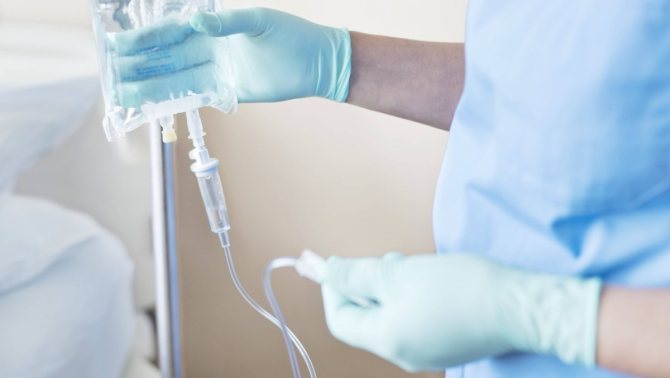
The cost of such a program will vary depending on the range of recovery support services offered, amenities and location of the rehabilitation center.
Resocialization
For people suffering from substance use disorders, establishing meaningful connections with others, including those in recovery from the same disorders, can significantly reduce the need to use drugs.
That is why full integration back into society is of great importance for a former drug addict. It is necessary to establish relationships with friends and relatives who, most likely, have long turned their backs on him. Feeling the support of loved ones, the former drug addict receives an additional incentive to forget about the existence of Lyrica and return to a normal lifestyle.
How to quit on your own
You can stop using pregabalin only in the early stages of addiction, when use is episodic. It is important to find alternative sources of pleasure. It can be any hobby - music, literature, creativity. But the best option is to play sports - they not only normalize the psycho-emotional state, but also improve hormonal levels, and also develop a sense of responsibility. Having achieved even minor successes, the former drug addict will receive a new incentive to maintain a healthy lifestyle. Strictly speaking, a new hobby becomes his new drug.
As for the later stages of addiction, in this case a volitional decision alone will not be enough. Therefore, in such situations, it is better to trust professionals and contact a rehabilitation center.
Bibliography:
- Wikipedia. Pregabalin.
- Co-Dependency.
- Lyrica Addiction: Side Effects, Detox, Withdrawal, and Treatment.
- Federal clinical guidelines for the diagnosis and treatment of withdrawal syndrome.
- Author Artyom Emelyanenko

Editor Artyom Emelyanenko

